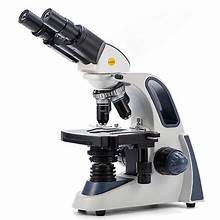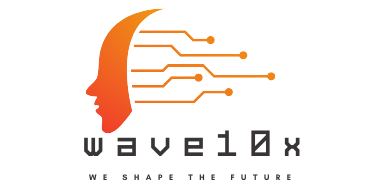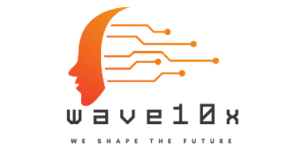Introduction
When we think about the backbone of healthcare, medical equipment might not be the first thing that springs to mind – we often celebrate the human touch of doctors and nurses. Yet, without the evolution of medical instruments, from the humble stethoscope to the complex MRI scanner, healthcare as we know it would be vastly different. This guide will take you on a journey through the world of medical equipment, from the basic tools that have been the foundation of diagnostics and treatment to the cutting-edge innovations shaping the future of medicine. So, let’s embark on this fascinating exploration together!
I. Diagnostic Devices: Unlocking the Mysteries of the Human Body
A. Imaging Equipment
- X-ray Machines: Remember breaking a bone and marveling at the X-ray images? These machines use electromagnetic radiation to provide us a peek inside the body, revealing broken bones or even monitoring lung health.

C – RAY Prime - MRI Scanners: Stepping into an MRI scanner might feel like entering a sci-fi movie. These powerful machines use magnetic fields and radio waves to create detailed images of organs and tissues, helping doctors diagnose conditions ranging from torn ligaments to tumors.
-

MRI - Ultrasound Machines: Often associated with pregnancy, ultrasound machines use sound waves to create images of the inside of the body, assisting in the examination of fetal development, detecting heart conditions, and more.
-

Ultrasound System
B. Monitoring Devices
- ECG Machines: An electrocardiogram (ECG) machine records the electrical activity of the heart, crucial for diagnosing heart conditions. It’s amazing how simple stickers attached to the skin can provide such vital information!

- Blood Pressure Monitors: These are our silent guardians, keeping an eye on our blood pressure, whether at the doctor’s office or home. High or low blood pressure can be indicative of underlying health issues.

- Pulse Oximeters: By simply clipping onto a finger, these handy devices measure the oxygen saturation levels in our blood – a critical metric for those with respiratory conditions.
C. Laboratory Equipment
- Centrifuges: Have you ever wondered how blood samples are prepared for testing? Centrifuges spin samples at high speeds to separate fluids based on density, making them essential in medical labs.
- Microscopes: The ability to see what’s invisible to the naked eye has fundamentally changed medical science. Microscopes help in diagnosing diseases by examining blood cells, bacteria, and other microorganisms.

- Spectrophotometers: These devices measure the intensity of light, aiding in various tests and research, including DNA analysis. They are the unsung heroes of the lab, ensuring accurate diagnoses.
II. Therapeutic Apparatus: Aiding in Recovery and Treatment
A. Surgical Instruments
- Scalpels and Scissors: Even in an age of complex machinery, the precision and reliability of hand-held surgical tools remain unmatched. They are the cornerstone of any surgery, from life-saving operations to cosmetic procedures.
- Sutures and Staplers: Closing a wound effectively is crucial for healing. Sutures and staplers have evolved to minimize scarring and speed up recovery, embodying the delicate art and science of surgery.
- Electrocautery Devices: These tools use electric current to heat tissue, cutting or sealing it to prevent blood loss during surgery. It’s a brilliant example of how technology can control the most vital element of life: blood.
B. Rehabilitation Devices
- Physiotherapy Equipment: Recovery often requires more than just time. Physiotherapy equipment, including treadmills and resistance bands, helps in regaining strength and mobility after injuries or surgeries.
- Prosthetics and Orthotics: The advances in prosthetic limbs and orthotic supports have been life-changing for many, offering mobility and hope. It’s a beautiful blend of human creativity and compassion.
- Exercise Equipment for Rehabilitation: Tailored exercise equipment can make a world of difference in rehabilitation, helping individuals recover faster and return to their daily activities.
C. Home Healthcare Devices
- Portable Oxygen Concentrators: For people with chronic respiratory conditions, these devices are a lifeline, allowing them the freedom to live life more fully.
- Nebulizers: Turning medication into a mist to be inhaled, nebulizers are a boon for asthma patients, especially children, making medication administration a breeze.
- Blood Glucose Monitors: Monitoring blood sugar levels has never been easier, empowering diabetics to manage their condition effectively and maintain a healthier lifestyle.
III. Life Support Equipment: Sustaining Critical Life Functions
A. Ventilators

- Types of Ventilators: From simple mechanical models to advanced versions with customizable settings, ventilators are critical in supporting patients who struggle to breathe on their own.
- Settings and Adjustments: The capability to fine-tune ventilator settings for each patient’s needs is a testament to the incredible progress in medical technology.
- Patient Monitoring through Ventilation: Continuous monitoring is vital to ensure that the patient receives optimal support, showcasing the seamless integration of technology in critical care.
B. Dialysis Machines
- Hemodialysis: This process cleans the blood of those whose kidneys can no longer perform this essential function, literally offering them a second chance at life.
- Peritoneal Dialysis: A less known but equally vital type, this method uses the patient’s body tissues to filter the blood, offering more freedom and flexibility.
- Innovations in Dialysis Technology: The ongoing research and development are promising, aiming to make dialysis more efficient, less intrusive, and widely accessible.
C. Anesthesia Machines

- Components and Functionality: Modern anesthesia machines are marvels of engineering, ensuring that patients undergo surgeries with minimal discomfort and maximum safety.
- Safety Standards: The stringent safety standards these machines adhere to is a reflection of the medical community’s commitment to patient care.
- Recent Advancements: With every technological breakthrough, anesthesia machines become safer and more reliable, minimizing risks and improving outcomes.
IV. Storage and Sterilization Solutions: Ensuring Safety and Hygiene
A. Cold Storage
- Refrigerators and Freezers for Pharmaceuticals: Proper medication storage is critical, and these specialized refrigerators and freezers ensure that vaccines and medicines are kept at optimal temperatures.
- Blood Bank Refrigerators: Storing blood products requires precision, and these refrigerators are designed to maintain the exact conditions needed to keep blood safe for transfusions.
- Storage Guidelines and Monitoring: Vigilant monitoring and strict guidelines ensure that these precious resources are preserved correctly, highlighting the importance of behind-the-scenes equipment in healthcare.
B. Sterilization Equipment
- Autoclaves: Using steam under pressure, autoclaves sterilize medical tools and equipment, making them safe for reuse. The simplicity and effectiveness of this method are truly impressive.
- UV Sterilizers: Ultraviolet light offers a chemical-free way to disinfect, playing a crucial role in maintaining a sterile environment in healthcare settings.
- Chemical Sterilization Methods: For items that can’t withstand high temperatures, chemical sterilants provide a vital alternative, showcasing the diverse arsenal healthcare has to combat infection.
C. Disposal Systems
- Medical Waste Incinerators: Safely disposing of medical waste is as crucial as any treatment, to prevent infection and environmental contamination.
- Sharps and Biohazard Disposal: Specialized containers and processes ensure that needles, scalpels, and other sharps are disposed of safely, protecting healthcare workers and patients alike.
- Environmentally Friendly Disposal Techniques: The focus on green disposal methods reflects the healthcare industry’s awareness and commitment to environmental conservation, a responsibility we all share.
V. Cutting-edge Innovations in Medical Equipment
A. Wearable Technology
- Health Monitoring Bands: These devices have taken personal health monitoring to new heights, allowing us to track everything from heart rate to sleep patterns.
- Smartwatches with Medical Applications: Beyond telling time, smartwatches now alert us to potential health issues, encouraging proactive healthcare.
- Future Trends in Wearable Tech: The potential for wearable technology in medical applications is boundless, promising a future where our health is continuously monitored for our well-being.
B. Telemedicine and Remote Monitoring Devices
- Telehealth Platforms: These platforms have transformed the accessibility of healthcare, especially in remote or underserved areas, making medical consultations possible across distances.
- Remote Patient Monitoring Systems: For chronic conditions or post-operative care, these systems offer a way to keep doctors informed about patient health, reducing hospital visits and readmissions.
- Benefits and Challenges: While the advantages of telemedicine and remote monitoring are numerous, challenges like data security and equity of access remain, highlighting areas for future improvement.
C. Robotics in Medicine

- Surgical Robots: These robots extend the capabilities of human surgeons, allowing for precision and flexibility that’s simply not possible with human hands alone.
- Rehabilitation Robots: In the realm of physical therapy, robots offer unique benefits, aiding in the recovery of movement through repetitive, precise exercises.
- Pharmacy Automation Systems: Automated pharmacies are revolutionizing the way prescriptions are filled, increasing efficiency and accuracy, and allowing pharmacists to focus more on patient care.
Summary
From the simple yet essential blood pressure monitor to the sophisticated robotics in surgery and rehabilitation, medical equipment plays a pivotal role in every aspect of healthcare. As we look to the future, the integration of technology in medicine promises not only more advanced care options but also a shift towards more personalized, proactive healthcare solutions. The journey through the evolution of medical instruments is a testament to human ingenuity and our relentless pursuit of better health. As we continue to innovate and adapt, the possibilities are as limitless as our collective imagination.
FAQs
- What is the difference between diagnostic and therapeutic medical equipment?
Diagnostic equipment helps in identifying diseases and health conditions, while therapeutic devices aid in treating or managing them.
- How has medical equipment evolved over the years?
From rudimentary tools to highly sophisticated machines, medical equipment has evolved to become more precise, efficient, and patient-friendly, significantly improving the quality of healthcare.
- What are some of the key safety considerations when using medical equipment?
Proper training, regular maintenance, and adhering to standard operating procedures are crucial to ensure the safety and effectiveness of medical equipment.
- Can medical equipment be used at home, and if so, which types?
Yes, devices like blood pressure monitors, blood glucose meters, and portable oxygen concentrators are designed for home use, empowering patients to manage their health conditions more actively.
- What are the upcoming trends in medical equipment technology?
Wearable tech, telemedicine, and medical robotics are among the leading trends, focusing on making healthcare more accessible, personalized, and efficient.



